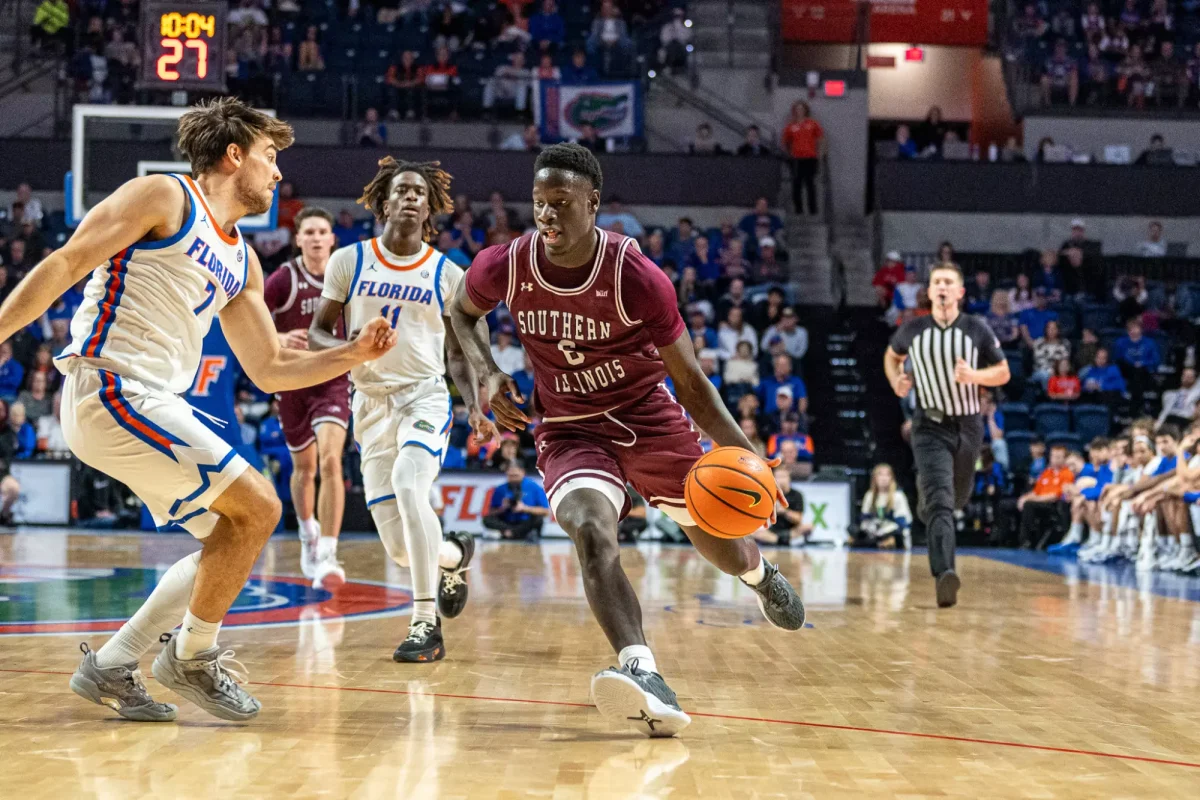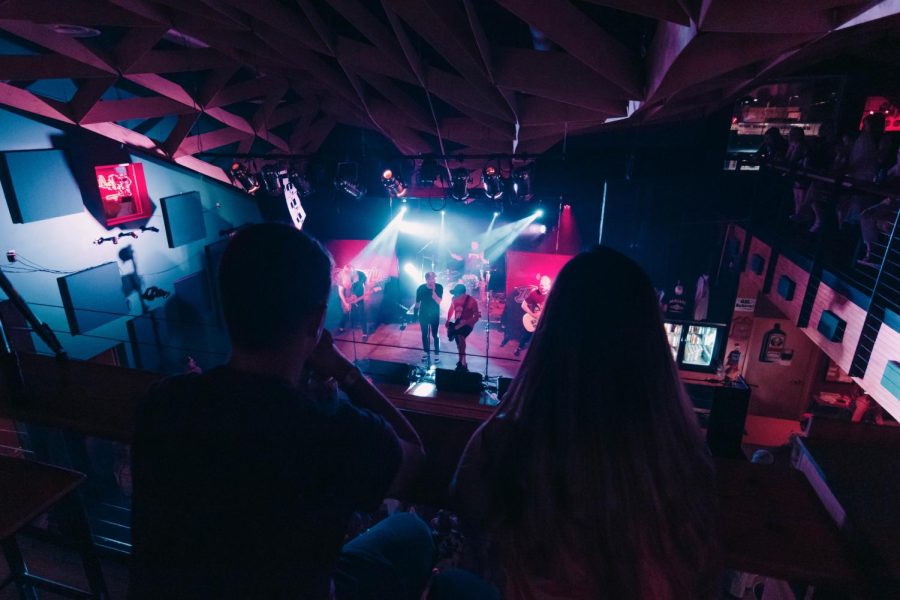‘Star Wars’ film full of references to films that came before
December 7, 2015
Shakespeare stole from classic texts like a kleptomaniac, carrying their complex plots, star-crossed lovers and antique events back to his Globe Theatre. Dr. Dre created multiplatinum albums by sampling well-known recordings into new hip-hop harmonies.
And such are the humble origins of one of the most iconic movie franchises in history. George Lucas mashed together the “Star Wars” saga from borrowed scraps of the past, building his world with ideas, characters, images and music born a long time ago and cinemas far, far away.
As “The Force Awakens” nears its Dec. 18. release, “Star Wars” scholars call those borrowed cornerstones a vital link to the franchise’s cross-generational appeal and staying power.
Advertisement
Call it homage if you like, imitation if you must, but don’t confuse it with coincidence, said Bryan Young, editor in chief of bigshinyrobot.com and co-host of the weekly “Star Wars” podcast “Full of Sith.”
“Good artists borrow and great artists steal,” he said. In his interviews with Lucas’ filmmaking collaborators, he found that any parallel to another film was never just a coincidence. “They said the only way you could communicate with George was talking through films. Everything was a film reference, and he was an encyclopedia of those film references.”
He noted that each “Force Awakens” trailer contains numerous carefully shaped visual callbacks to the original trilogy. The shots of Rey, a callow nobody stuck on a planet she wants to leave, wistfully peering into the distance just like Luke did in 1977, are designed for tantalizing nostalgia.
The fabled “Star Wars” opening screen, introducing moviegoers to the plot with text scrolling outward into the stars, explicitly parallels the crawling prelude of “Flash Gordon,” a 1936 serial with Alex Raymond’s comic-strip hero battling an evil space emperor. Lucas also borrowed his film’s first action shot — an enormous Imperial Star Destroyer gliding ominously overhead. It was a scene and camera angle created nine years before in Stanley Kubrick’s revolutionary “2001: A Space Odyssey.”
The victory celebration by the heroes that concludes the film was explicitly based on “Triumph of the Will,” a striking documentary of the 1934 Nazi Party rally in Nuremberg by Adolf Hitler protegee Leni Riefenstahl. Although Lucas despised the service to which she lent her talent, he hailed her modernity and acknowledged his indebtedness.
“I think he’s a great artist and he’s definitely stolen some of the greatest bits from the greatest movies,” Young said. “Our language works by building on what has come before. The language of cinema works the same way, and I think ‘Star Wars’ does it better than anyone else.”
Young’s essays connect the dots of film history, tracing World War II aerial dogfight news footage, samurai classics and John Wayne westerns to their crisscross landings on the desert planet Tatooine.
Advertisement*
“‘Star Wars’ isn’t pure science fiction, and that’s perhaps why it’s so great,” said Cole Horton, a lifelong fan and 20th-century historian. Co-author of the DK illustrated reference book “‘Star Wars’: Absolutely Everything You Need to Know,” he finds a key to the saga’s ongoing success in Lucas’ choice of “visuals which are familiar and yet unique.”
“I can’t imagine the attack on the Death Star being as powerful as it is today if it wasn’t influenced by films like ‘The Dam Busters’ or ‘The Bridges at Toko-Ri,'” which had been made 20 years before Lucas’ film. “That’s what makes it special. It works for every generation, and I’m not sure that standard ’70s science fiction would have stuck around.”
Akira Kurosawa’s 1958 samurai comedy-drama “The Hidden Fortress” gave Lucas many ideas. The plot is carried by a bickering peasant duo walking across broad landscapes, who inspired the squabbling droids C-3PO and R2-D2. The focus is a brave warrior escorting a princess to safety. Even the horizontal wipe effects used in the editing of “Star Wars” appeared here first.
The lightsaber “seems to hit on every iconic sword-wielder ever,” Horton said. “It’s part ‘Robin Hood’ from the 1938 film, it’s part samurai Kurosawa. When Luke is handed down the saber from Obi-Wan Kenobi, it is very ‘Excalibur’-esque. There are other sword movies, but even kids today want to be playing with lightsabers!”
When Luke discovers his Uncle Owen and Aunt Beru killed by Stormtroopers and their solitary farm burning, the tragedy and his reactions are borrowed shot for shot from John Ford’s 1956 classic “The Searchers.” Luke’s quest to fight back as a Jedi warrior parallels the western hero’s campaign of revenge.
The very precise fighter-bomber strategy Luke and his fellow pilots use for the climactic trench raid against the Death Star has a visual layout, shot choices and even the squad’s in-flight chatter drawn from 1955’s “The Dam Busters.” Air war genre films and newsreels also influenced the wailing sound design of the empire’s TIE Fighters, based on the siren-equipped German Stuka dive bomber, and the mobile cannon turrets on the Millennium Falcon echo those of an American bomber.
Han Solo, a morally dubious smuggler, has a fair bit in common with spaghetti-western antiheroes. Lucas borrowed a scene from Sergio Leone’s “The Good, the Bad and the Ugly” when Han aimed his hidden pistol at Greedo as they sat in the cantina, shooting his rival from under the table. At least that’s how it played out before Lucas recut the “Han Shot first” scene for later editions, making Harrison Ford’s character less deceitful. Lucas saw Han essentially akin to Humphrey Bogart’s cynical yet honorable wiseguy loner in “Casablanca,” a parallel visible in Ford’s performance.
Lucas cast veteran film actors in roles connecting to their rich filmographies. As Obi-Wan, Alec Guinness was linked to the arid, sun-baked wastelands he first visited in David Lean’s 1962 “Lawrence of Arabia.” And who fit the role of sinister Grand Moff Tarkin better than Hammer horror movie star Peter Cushing?
The influence of earlier hits even affected Lucas’ composer John Williams. Most who remember the 1942 melodrama “King’s Row” think of it as the feature with Ronald Reagan’s best acting. But an untrained ear can recognize how remarkably similar the main theme by Erich Korngold sounds to the motifs of Williams’ orchestral “Star Wars” soundtrack.
“I don’t want to be that ‘Star Wars’ fan who pays so much attention to ‘Star Wars’ that I miss everything behind it,” Young said. “I love drawing people to these places because there’s a world of cinema there that ‘Star Wars’ is informed by, but I think they can enjoy ‘Star Wars’ more knowing all of the things behind it.”
Just as old movies were Lucas’ film school, understanding the references that his film encompassed is a great introduction to movie history.
Advertisement







